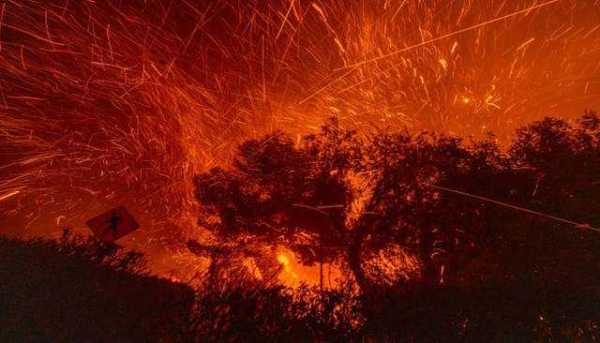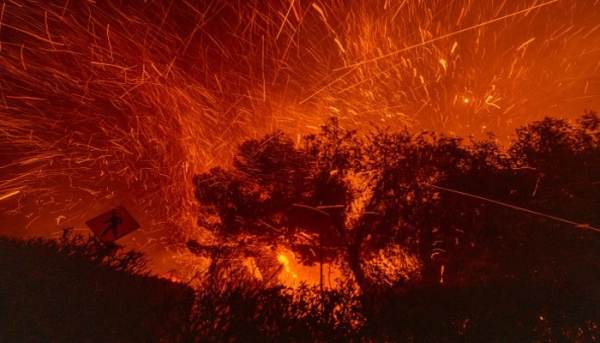

As Los Angeles grapples with an unprecedented wildfire that threatens to etch its name in history as Southern California’s most devastating blaze, a groundbreaking study by UCLA researchers revealed a critical climate phenomenon fueling the crisis.
Scientists at the University of California Los Angeles have uncovered a startling global trend they call ‘hydroclimate whiplash’ — a volatile shift between extreme wet and dry weather patterns. This climate instability is now being pinpointed as the primary catalyst behind the devastating fires engulfing the LA region.
The study, published during the ongoing catastrophe, outlines how consecutive years of weather extremes have set the stage for disaster. Following years of severe drought, California was pummeled by ‘atmospheric rivers’—narrow bands of water vapor—during the winters of 2022-23 and 2023-24. These record-breaking rains buried mountain towns in snow, triggered widespread flooding, and unleashed hundreds of landslides.
But this period of abundance was abruptly succeeded by a scorching summer and a record-dry rainy season in 2025. The parched vegetation left behind has now become the perfect fuel for wildfires.
“Los Angeles is burning, and accelerating hydroclimate whiplash is the key climate connection,” the researchers explained, as flames continue to devastate the affluent Palisades suburb, where 100 mph winds and severe drought conditions combined to create a deadly inferno.
Since January 7, the fires have claimed at least five lives, razed thousands of homes—including those of Hollywood elites—and displaced over 130,000 residents.
A global climate crisis in actionUCLA’s findings warn that this erratic weather is part of a global pattern exacerbated by climate change, with devastating consequences. Hydroclimate whiplash, they argue, connects extreme weather events in a chain reaction. From torrential storms to blazing wildfires, these swings are becoming more severe with each degree of global warming.
Lead author Dr. Daniel Swain, a climate scientist at UCLA, put it bluntly- “The evidence shows that hydroclimate whiplash has already increased due to global warming, and further warming will bring about even larger increases.”
The researchers analyzed hundreds of studies and concluded that hydroclimate whiplash has surged globally by 31% to 66% since the mid-20th century—far exceeding previous climate model predictions.
Why the planet is whipping back and forthThe study identifies anthropogenic (human-caused) climate change—including fossil fuel consumption and large-scale livestock farming—as the primary driver of whiplash. Warmer air holds more water, leading to heavier rainfall and catastrophic floods. Yet, this same moisture accelerates the growth of flammable vegetation, which dries out under extreme heat, becoming kindling for devastating fires.
Even minor triggers, like a lightning strike or human-made sparks, can ignite these tinderboxes. The drier the plants, the faster the flames spread—a reality now tragically unfolding in Los Angeles.
The team’s analysis predicts that as global temperatures rise, hydroclimate whiplash will escalate dramatically. A 3°C warming could increase such events by 113% globally, with the Middle East, South Asia, northern Africa, and other regions expected to experience the most pronounced effects.
“The less warming there is, the less of an increase in hydroclimate whiplash we’re going to see,” Dr. Swain emphasized. “Yet we are still on a trajectory to experience between 2°C and 3°C of warming this century. Substantial further increases in whiplash are likely, and we must incorporate this into our risk assessments and adaptation strategies.”